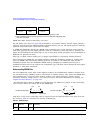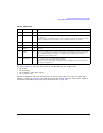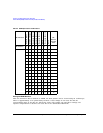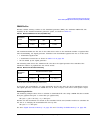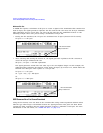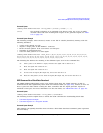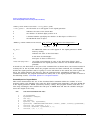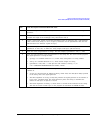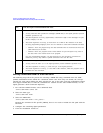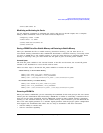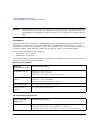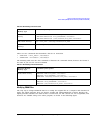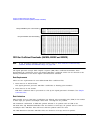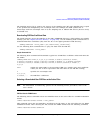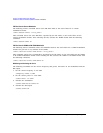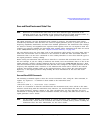
318 Agilent N518xA, E8663B, E44x8C, and E82x7D Signal Generators Programming Guide
Creating and Downloading User-Data Files
Pattern RAM (PRAM) Data Downloads (E4438C and E8267D)
Selecting a Downloaded PRAM File as the Data Source
The following steps show the process for selecting a PRAM file using commands from the GSM
(TDMA) modulation format. While the commands shown come from only one format, the concept
remains the same when making the data selection for any of the other real-time modulation formats
that support PRAM data. To find the commands for Custom and the other TDMA formats, see the
signal generator’s SCPI Command Reference.
1. For real-time TDMA formats, select unframed data:
:RADio:GSM:BURSt:STATe OFF
2. Select the data type:
:RADio:GSM:DATA PRAM
3. Select the PRAM file:
:RADio:GSM:DATA:PRAM <"file_name">
Because the command is file specific (PRAM), there is no need to include the file path with the
file name.
4. Configure the remaining signal parameters.
5. Turn the modulation format on:
8 Send the PRAM file data stored in the array, databuffer, to the signal generator.
• iwrite() sends the data specified in databuffer (PRAM data) to the signal generator (session
identifier specified in id).
• The third argument of iwrite(), bytesToSend, contains the length of the databuffer in bytes.
In this example, it is 240.
• The fourth argument of iwrite(), 0, means there is no END of file indicator in the data.
In many programming languages, there are two methods to send SCPI commands and data:
— Method 1 where the program stops the data download when it encounters the first zero
(END indicator) in the data.
— Method 2 where the program sends a fixed number of bytes and ignores any zeros in
the data. This is the method used in our program.
For your programming language, you must find and use the equivalent of method two.
Otherwise you may only achieve a partial download of the user file data.
9 Send the terminating carriage (\n) as the last byte of the waveform data.
• iwrite() writes the data “\n” to the signal generator (session identifier specified in id).
• The third argument of iwrite(), 1, sends one byte to the signal generator.
• The fourth argument of iwrite(), 1, is the END of file indicator, which the program uses to
terminate the data download.
Line Code Description—Download PRAM File Data



